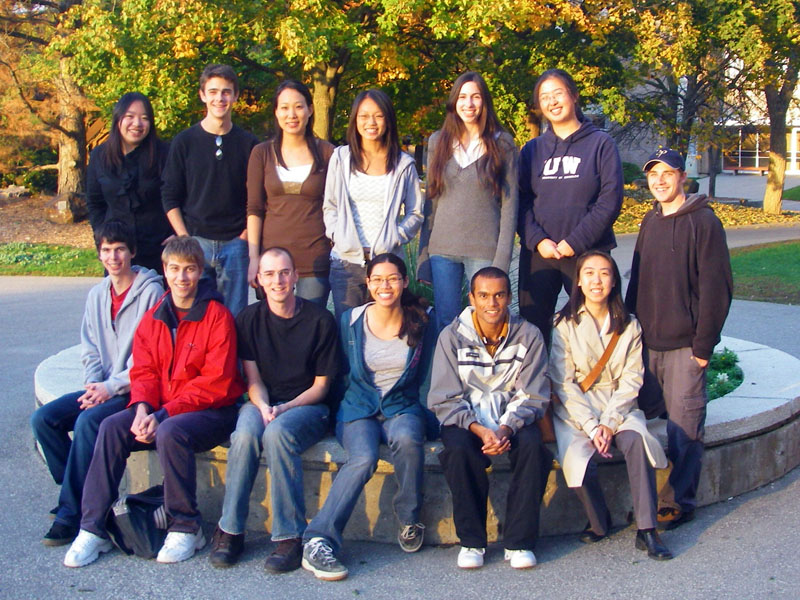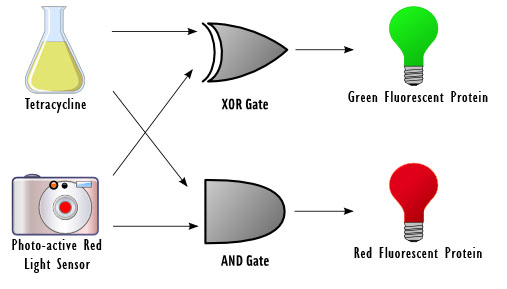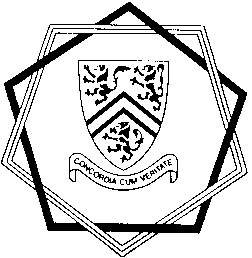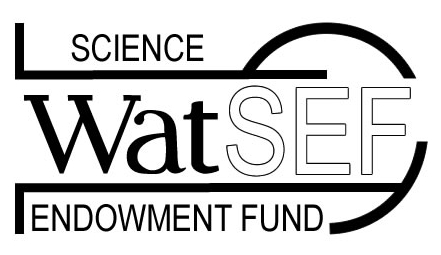Waterloo
From 2007.igem.org
(Difference between revisions)
| Line 7: | Line 7: | ||
|- | |- | ||
| style="padding:5px" | [[Image:Group photo mimi1.JPG|450px]] | | style="padding:5px" | [[Image:Group photo mimi1.JPG|450px]] | ||
| - | |||
| - | |||
|- | |- | ||
| style="padding:5px" | The UW iGEM team is a very interdisciplinary group. Our team members span three faculties: Science, Mathematics, and Engineering, and represent a wide range of undergraduate programs: Biology, Biomedical Sciences, Biochemistry, Computer Science, Bioinformatics, Computer Engineering, Electrical Engineering, Chemical Engineering, and Mathematical Physics. | | style="padding:5px" | The UW iGEM team is a very interdisciplinary group. Our team members span three faculties: Science, Mathematics, and Engineering, and represent a wide range of undergraduate programs: Biology, Biomedical Sciences, Biochemistry, Computer Science, Bioinformatics, Computer Engineering, Electrical Engineering, Chemical Engineering, and Mathematical Physics. | ||
| Line 14: | Line 12: | ||
Drawing on our diverse backgrounds, we bring a wide range of skills and modes of creative thinking to our iGEM project. The iGEM competition is providing us with an opportunity to become more familiar with the emerging field of synthetic biology in an engaging and fun atmosphere. In addition to gaining experience in the design, construction, and analysis of genetic circuits, we are also meeting the challenge of bringing together a large, diverse group toward a common goal. | Drawing on our diverse backgrounds, we bring a wide range of skills and modes of creative thinking to our iGEM project. The iGEM competition is providing us with an opportunity to become more familiar with the emerging field of synthetic biology in an engaging and fun atmosphere. In addition to gaining experience in the design, construction, and analysis of genetic circuits, we are also meeting the challenge of bringing together a large, diverse group toward a common goal. | ||
| - | |||
| - | |||
|} | |} | ||
Revision as of 14:15, 26 October 2007

| Our Project | |||
| Abstract | |||
| - goals
- biological implementation of a fundamental engineering concept, the half-adder - half adder calculates the sum of two 1-bit inputs project - bacterial sensor which responds to two inputs: red light and the chemical tetracycline - input sensors control genetic switches in order to carry out logic functions - output of the half-adder function...green or red fluorescence | |||
| Project | Modelling | Construction and Testing | Extensions |
|
//Modelling |
|
|







